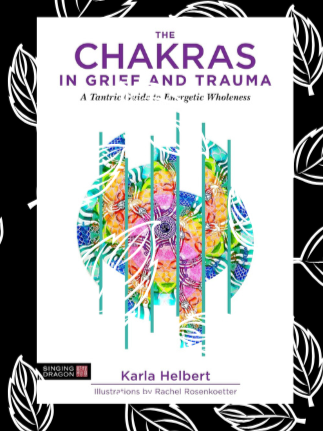
Connecting Mind and Spirit
Energy-Informed Resources
This page is under construction.

ENERGY-INFORMED PSYCHOTHERAPY
Auras | Chakras | Meridians
Energy psychology is a mind-body therapy that combines traditional psychotherapy with energy-based practices. The guiding principle is that mental, physical, and emotional wellbeing are restored when the body’s energy systems (auras, chakras, and meridians) are in balance.
Auras, meridians, and chakras have practical applications in psychotherapy. Using an energy-informed framework increases understanding of the multiple dimensions of human experience. Our work together will be guided by premise that balance is restored by identifying and releasing psychological and emotional blocks associated with energy centers. Depending on your personal preferences, restoring balance may include any of the following:
personalized psychotherapy (any combination of talk therapy, EMDR, cognitive-behavioral therapy, narrative therapy, parts work, attachment-focused therapy, brainspotting, and more)
explorative activities and exercises to enhance insight
meditation
coping strategies (grounding, visualizations, somatic techniques, mindfulness, etc.)
journaling
dream exploration
your personal self-care practices (aromatherapy, massage, yoga, sound healing, crystals, etc.)

Biofields | Auras

Auras
Human beings radiate electricity at a low level. This is commonly known as an electromagnetic field. But what is it exactly? Both science and spirituality offer some interesting insight.

Chakras

Chakras
Our bodies are a living matrix of energy. And the chakra system can help us identify blockages and opportunities for growth.
Many ancient models of wellbeing include the concept of a vital force or energy. Examples include: qi (chi) in Chinese medicine, ki in Japanese medicine, and prana in Ayurveda. There are also similar terms and concepts within indigenous communities. More recently, Sigmund Freud used the word libido to describe his concept of a life energy force. And, psychologist, Wilhelm Reich, called it orgone energy and saw it as a healing force that can become trapped by behavior patterns, under the body’s armor.
Chakras (Sanskrit for wheels) were originally associated with gods, symbols, and mantras. When we look at ancient text, we see as few as four chakras and as many as 49 chakras. The concept of chakra system was introduced to American culture by the Theosophical Society in the 1870s. What was a complex meditation aid for advanced yogis was reimagined to include metaphysical considerations regarding the nature of consciousness and its interaction with mental, emotional, and physical systems (Jain et al, 2015). Over time, the chakra system evolved to represent the fusion of multiple schools of thought - including the work of psychologists Carl Jung and Abraham Maslow, mythologist Joseph Campbell, Western scholars of Indology, the Esalen Institute, energy healers, and a group of esotericists associated with the Theosophical Society. Over the last century, the seven charka system, with its rainbow of colors, has become much more accessible for regular folks; however, it is less connected to its roots.
The seven chakras are positioned throughout the our bodies - from the base of our spine to the crown of our head. Each chakra has its own vibrational frequency, color, and governs specific functions.
Crown | Sahasrara - spiritual connection, wisdom, bliss
Third Eye | Ajna - intuition, purpose, vision
Throat | Vishuddha - authentic communication, truth, self-expression
Heart | Anahata - connection, love, empath, compassion
Solar Plexus | Manipura - confidence, self-esteem, personal power
Sacral | Swadhisthana - emotions, sexuality, creativity, joy, pleasure
Root | Muladhara - safety, security, trust, stability
Root Chakra
Our Survival Center.
Color: Red
Element: Earth
Location: Base of Spine
Governing Aspects: survival, security, safety, basic needs
Helpful Meditations / Visualizations
Sacral Chakra
Flexibility and Flow
Color: Orange
Element: Water
Location: Lower abdomen, below the navel
Governing Aspects: emotional expression, creativity, pleasure, sexuality, and relationships

Meridians
Videos
for book lovers
Disclaimer: As with most philosophical | spiritual frameworks, the scientific community offers little or inconsistent supporting evidence. However, interventions (within these philosophical | spiritual frameworks) are supported by consistent, measurable mental health outcomes in the scientific literature (see references). Psychospiritual resources are complementary. You will NEVER be asked to participate in any topic or activity that is not directly aligned with your personal beliefs AND supports your goals for therapy.






















